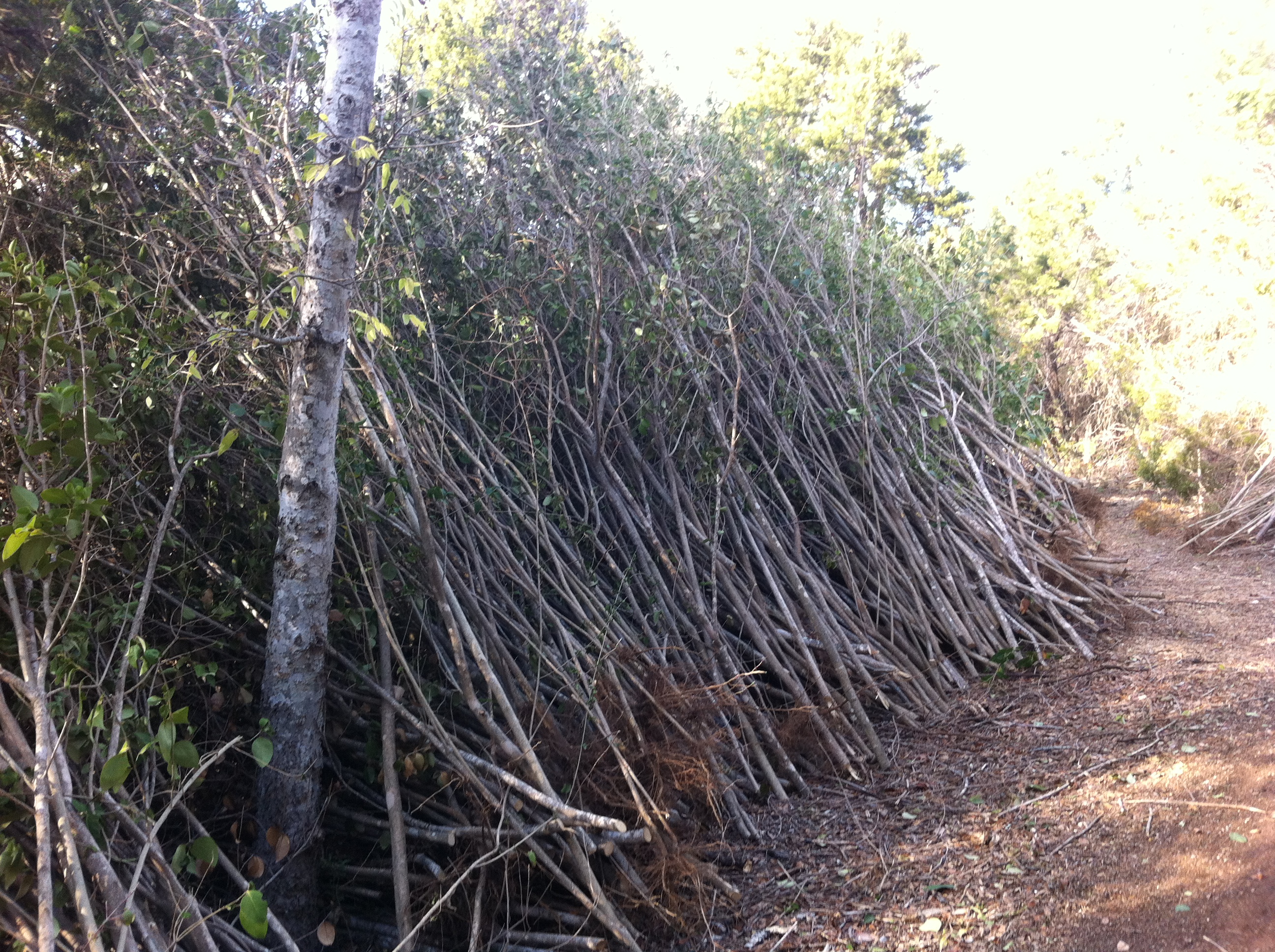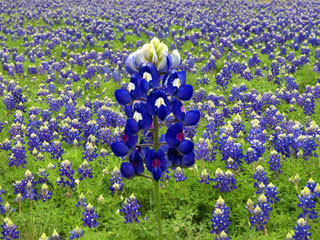With the lure of pleasant spring weather and the lifting of burn bans in counties across Texas, the sight and smell of smoke can’t be missed. Downed trees and cleared cedar – or slash – comprise the bulk of the flaming pyres as landowners rush to reduce it all to a heap of ash before the burn bans rule again. But, before you light it up, take a moment to consider the wildlife benefits of that downed brush.
Wildlife Protection
Brush piles offer shelter and safe havens for all manner of birds and small mammals. They offer protective covering, an escape from predators, as well as warmth in the winter and cooling shade in the summer. In the tangle of branches, birds build nests and mammals hollow out dens. Generally speaking, consider these two types of brush piles:
Teepee Type
As described the Natural Resources Conservation Service (NRCS):
“The key to forming this type of habitat is to lightly pile branches in such a fashion so that plenty of sunlight reaches the ground. The branches can be sparingly piled in a teepee-type fashion or laid against an elevated object, such as a tree stump or fallen log. Discarded Christmas trees (without the tinsel) can be used in a similar manner. The resulting combination of overhead woody cover mixed with a grass and forb groundcover provides a secure hiding and resting site.”
Foundation Type
As described by the NRCS:
“Generally, brush piles of this type should range between 10 to 15 feet in diameter, and 5 to 8 feet in height. The most common design is built using logs (arranged in a tic-tac-toe pattern) for the foundation and covered with brush. Start with the largest material on the bottom to provide hiding space under the pile. Shallow depressions can also be dug before beginning the brush pile to provide more space.”
For much more information on constructing brush piles for wildlife, including suggested materials for your foundation, maintenance, strategic locations, and even how to make “living shelters”, check out Wildlife Brush Piles by NRCS.
Lopped and Dropped (or Dragged a Bit) Slash for Erosion Control
Downed brush left on slopes can help stabilize the land and control erosion. It slows down rain washing away the soil, allowing native grasses and plants a chance to take root and thrive. Slash placed around ponds and tanks also helps filter runoff into the water feature.
Mulched Slash for Erosion Control
Building brush piles and lopping and dropping require nothing more than elbow grease, patience, and a plan of action, but for those landowners who find themselves with simply too much downed brush, there is also the opportunity to mulch your slash. A friend of Landmark who visited Florida shortly after Hurricane Irma last October described the non-stop whir of brush shredders and towering “mulch mountains” she saw created from the countless downed trees in the wake of the hurricane. When the Blunn Creek Partnership hired Landmark Wildlife Management to help maintain and restore the City of Austin’s Blunn Creek Nature Preserve, one of the big tasks was getting the non-native trees under control. Ligustrum, in particular, had invaded large swaths of the preserve. After Landmark took down the trees, we converted them to mulch which was then redistributed along the nature trails for erosion control, to help the ground hold additional moisture, and return organic matter back into the soil. You can learn more about our Blunn Creek Restoration Project here.
Wildlife’s Treasure
We all know the old saying “one man’s trash is another man’s treasure”. That pile of downed slash you may look at as “trash” ready to be burned is actually wildlife’s treasure. As noted in the Texas Parks & Wildlife guide, Creating Shelter for Texas Wildlife, “anytime you trim, cut or pull woody materials from your landscape, you have a very valuable resource on hand… allowing it to remain in place is a valid use of this often burned or discarded material that will significantly benefit wildlife on your lot.”









